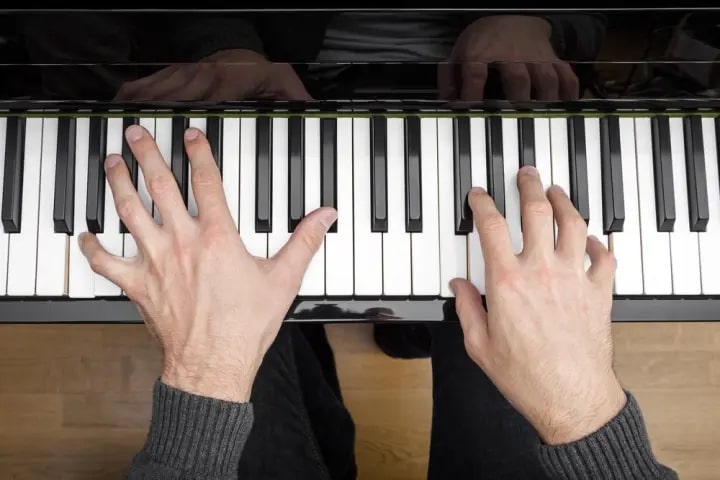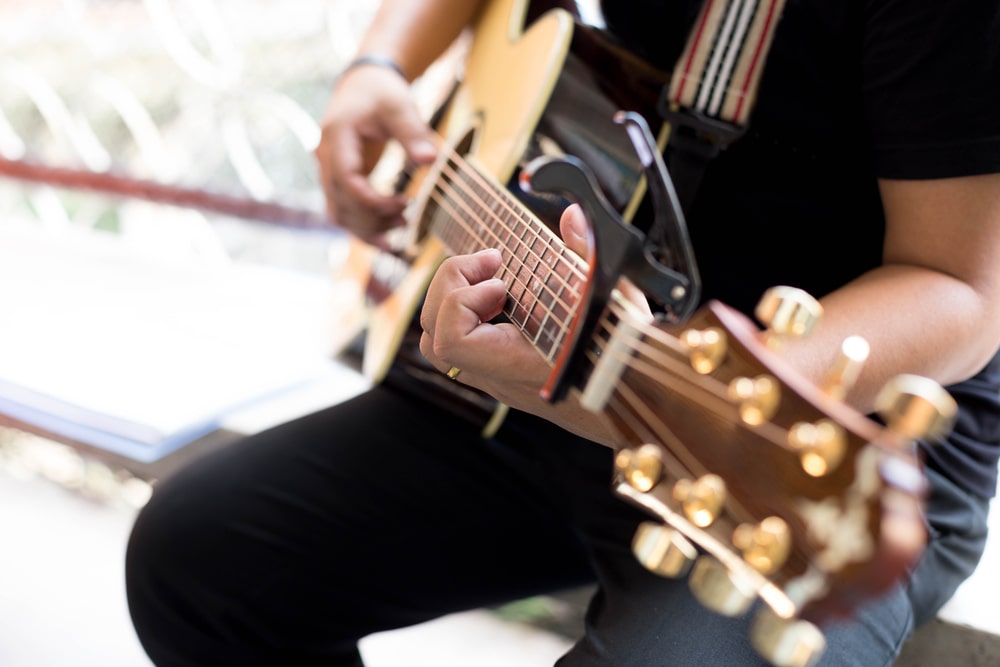In the realm of music, having an established key musically is a fundamental concept that underpins the structure and harmony of compositions. Whether you’re a seasoned musician or a casual listener, understanding what it means to have an established key in music can enhance your appreciation and comprehension of the art form.
In this article, we will explore the various facets of having an established key musically, its importance, and how it influences the creation and interpretation of music.
What Does Having an Established Key Musically Mean?
Having an established key musically refers to the practice of setting a specific tonal center or key for a musical piece. This key determines the set of pitches that will be used throughout the composition, providing a framework for melody, harmony, and overall musical structure.
The key is established through a series of harmonic relationships, typically beginning with a tonic note (the root of the key) and incorporating related chords and scales.
The Importance of Key in Music:
Having an established key musically is crucial for several reasons:
- Harmonic Foundation: The key provides a harmonic foundation, allowing composers to create cohesive and harmonious pieces.
- Emotional Tone: Different keys can evoke different emotions. For example, a piece in a minor key might sound sad or mysterious, while a major key often sounds happy and uplifting.
- Musical Coherence: Establishing a key helps maintain musical coherence, ensuring that all elements of the piece are related and make sense together.
How Is a Key Established in Music?

To achieve having an established key musically, composers and musicians follow a series of steps:
- Choosing a Tonic: The tonic is the root note of the key and serves as the starting point.
- Building Scales: Using the tonic, musicians build scales (e.g., major or minor) that define the key’s pitches.
- Harmonizing with Chords: Chords built from the scale tones reinforce the key. For example, in the key of C major, the chords C, F, and G are commonly used.
- Melodic Lines: Melodies are created using the notes of the established scale, adhering to the key.
Examples of Having an Established Key Musically:
Consider the famous piece “Für Elise” by Ludwig van Beethoven. This piece is in the key of A minor, which is evident from the recurring use of the A minor scale and chords. The consistent use of notes and harmonies within this key provides the piece with its characteristic sound and emotional tone.
Modern Applications:
In contemporary music, having an established key musically remains just as important. Pop songs, classical compositions, and even film scores rely on key establishment to create mood and coherence. For example, Adele’s “Someone Like You” is in the key of A major, which contributes to its poignant and emotional feel.
The Role of Key Changes:
While having an established key musically is foundational, many compositions also feature key changes or modulations.
These changes can add variety, tension, and interest to a piece. For instance, a song might start in a minor key and shift to a major key to signify a change in mood or storyline.
Types of Key Changes:
- Direct Modulation: Changing keys abruptly without a transition.
- Pivot Chord Modulation: Using a chord that is common to both the original and new key as a transition.
- Sequential Modulation: Repeating a musical phrase at a different pitch level.
Challenges in Maintaining an Established Key:
While having an established key musically is essential, it can also present challenges:
- Complexity in Composition: Maintaining a key while introducing variations and complexity requires skill.
- Performance Precision: Musicians must be precise in their pitch and intonation to stay within the key.
- Harmonic Innovation: Balancing adherence to a key with the desire for harmonic innovation can be difficult.
The Psychological Impact of Established Keys:
Having an established key musically goes beyond technical aspects and dives into the psychological impact of music on listeners. Different keys can evoke distinct emotional responses, influencing how we perceive and feel about a piece of music.
Research in music psychology suggests that major keys are often associated with feelings of happiness, brightness, and energy, while minor keys can evoke sadness, introspection, and melancholy. This emotional coloration is not arbitrary; it stems from cultural associations and the physical properties of sound frequencies.
Composers and musicians leverage these associations to craft pieces that resonate deeply with their audience, creating powerful emotional experiences through their choice of key.
Historical Context and Evolution of Musical Keys:

The concept of having an established key musically has evolved significantly over time. In the Baroque period, the development of the well-tempered tuning system allowed for more flexible key changes and modulation, expanding the expressive possibilities of music.
During the Classical and Romantic periods, composers like Mozart, Beethoven, and Chopin explored the emotional depth of different keys, solidifying the relationship between key choice and emotional expression.
In contemporary music, while digital tuning systems have made it possible to experiment with microtones and unconventional scales, the traditional system of major and minor keys remains prevalent, demonstrating its enduring significance in Western music.
The Relationship Between Key and Instrumentation:
Having an established key musically also influences the choice of instrumentation in a composition. Certain instruments have tonal qualities and resonances that are enhanced in specific keys. F
or instance, string instruments like the violin and cello resonate particularly well in keys such as D major and A major due to their open strings, which can produce a rich and full sound. Brass instruments, on the other hand, might prefer keys like E-flat major or B-flat major.
Composers often take these preferences into account to maximize the acoustic potential of the instruments they write for, ensuring that the chosen key complements the timbre and range of the ensemble.
The Impact on Performers and Audiences:
For performers, having an established key musically provides a framework within which they can interpret and express the piece. It dictates the technical demands, such as fingerings on a piano or the position of notes on a guitar.
Mastery of different keys is essential for musicians, as it allows them to play with precision and convey the intended emotional impact. For audiences, understanding the key of a piece can enhance their listening experience.
Recognizing that a piece in a minor key is likely to evoke a different mood than one in a major key helps listeners engage more deeply with the music, appreciating the subtle nuances of the composer’s intent.
This shared understanding between performer and audience, centered around the established key, creates a more immersive and cohesive musical experience.
Key Relationships and Their Functions in Composition
Having an established key musically is not just about setting a single tonal center but also about understanding the relationships between different keys. These relationships are often explored through concepts such as relative keys, parallel keys, and key signatures.
For example, the relative minor key of C major is A minor, meaning both share the same key signature but have different tonal centers. Parallel keys, such as C major and C minor, share the same tonic but differ in mode.
Composers use these relationships to create contrast, transition, and thematic development within a piece. By exploring and utilizing these key relationships, composers can add complexity and depth to their music, enhancing its emotional and structural impact.
The Role of Key in Genre-Specific Music:
Different musical genres often adhere to specific conventions regarding having an established key musically. For instance, classical music heavily relies on traditional major and minor keys, which are integral to its harmonic language and form.
Jazz, on the other hand, frequently employs modal interchange and complex key changes, using various modes and scales to achieve a unique harmonic palette.
In contrast, electronic music often experiments with unconventional scales and tonal centers, reflecting its diverse and evolving nature.
Understanding how different genres approach key establishment helps performers and composers align their music with genre-specific expectations and innovate within those frameworks.
The Teaching and Learning of Musical Keys:

Having an established key musically plays a significant role in music education. Learning to identify and work within a key is fundamental for students of music theory and practice.
Educational approaches often begin with teaching the basics of major and minor scales, key signatures, and chord progressions, gradually introducing more complex concepts such as modulation and key relationships.
Music teachers use these concepts to develop students’ analytical and performance skills, helping them understand the structure of music and how to apply theoretical knowledge in practice. Mastery of key concepts is crucial for developing proficiency in reading music, improvisation, and composition.
The Influence of Key on Music Technology:
In the realm of music technology, having an established key musically influences the development and functionality of software and digital tools. Digital audio workstations (DAWs), for example, often include features such as key detection, transposition, and chord progression tools that assist musicians in working within specific keys.
These tools help musicians experiment with different keys, automate key changes, and ensure harmonic coherence in their compositions.
Furthermore, algorithmic music generation and AI-driven composition tools often rely on established key structures to create harmonically sound music.
As technology continues to advance, the role of key in music remains a critical aspect of both creative and technical processes.
Conclusion:
Having an established key musically is a cornerstone of musical theory and practice. It provides a framework for harmony, emotional expression, and musical coherence. Whether in classical compositions, modern pop songs, or intricate film scores, the establishment and maintenance of a key play a critical role in shaping the music we hear and enjoy. Understanding this concept can deepen our appreciation for the skill and creativity involved in musical composition and performance.
By grasping the importance of having an established key musically, both musicians and listeners can gain a richer understanding of the intricate art of music creation. This knowledge not only enhances our listening experience but also underscores the timeless relevance of musical keys in shaping the soundscape of our lives.



